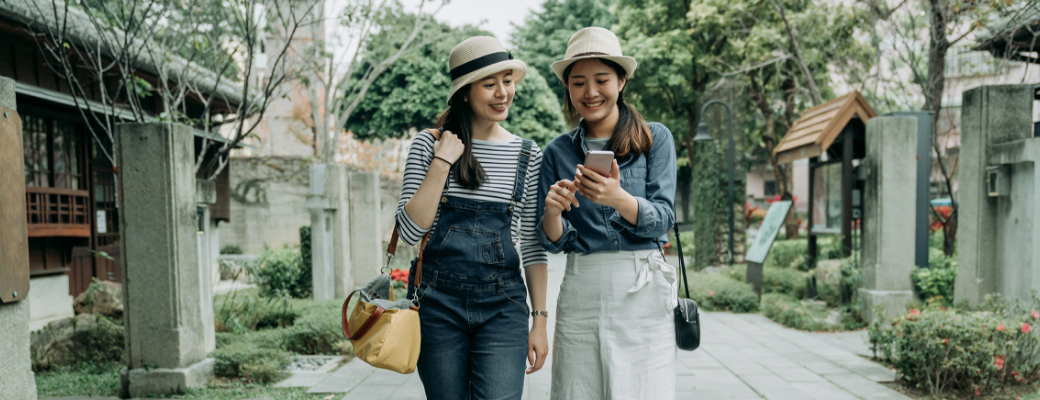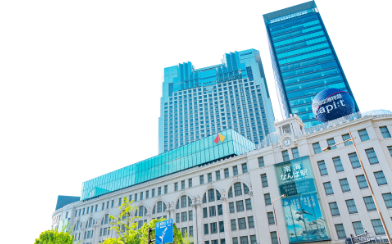
Digital Ticket
On sale: a set ticket including the Rapi:t , admission to the Tsutenkaku Observation Deck, and Nankai Soba!

Kongo Katsuragi Shrine on Osaka’s highest peak
A must-visit when climbing Mt. Kongo is the Katsuragi Shrine at the summit of the mountain.
The shrine and the nature-rich trail are dotted with historical power spots.
This article introduces the charm of Mt. Kongo Katsuragi Shrine, nearby sightseeing spots, and access information.
Mt. Kongo traverses the border between Osaka and Nara prefectures.
Located near its summit are Tenporin-ji Temple and Katsuragi Shrine.
The history of the temple is long, dating back to the Asuka Period.
In 665, En no Gyoja, a mountain ascetic, built Tenporin-ji Temple after a long ascetic training, and at that time, he built Katsuragi Shrine as a place to worship Hitokotonushi no Okami, a deity believed to be his ancestor.
Today, Katsuragi Shrine enshrines the 38 shrines of Katsuragi, the guardian deity of Mt. Kongo.
Mt. Kongo has long been considered a sacred mountain of "Shinbutsu-konkou" (mixture of Shinto and Buddhist beliefs).
However, in the Meiji era (1868-1912), due to the government's decree separating Shintoism and Buddhism, only Katsuragi Shrine remained, and Tenporin-ji Temple was closed.
In 1961, the main hall was reconstructed, thanks to the efforts of the Kongozan-Kō, and in 2011, the long-awaited restoration of the Gohonzon was realized, giving the temple its present appearance.
On July 7, the anniversary of En no Gyoja's death, the "Renge Daisai" festival is held to pray for the safety of the mountain in summer, and many ascetic practitioners from all over Japan gather at Mt. Kongo.
Although it takes about a 70-minute walk up a steep mountain trail to reach the Katsuragi Shrine on Mt. Kongo, many people are still attracted to the shrine.
The first attraction is the beautiful scenery of each of the four seasons and the varied climbing trails of Mt. Kongo.
In 2020, it was selected as a "Japan Mountain Heritage Site," which recognizes mountainous regions and activity groups that have a deep connection with nature and people to be preserved for the future.
Another fun aspect of climbing Mt. Kongo is the unique service of receiving a stamp at the summit if you climb between 6:00 and 19:00.
In winter, Mt. Kongo is famous for having the heaviest snowfall in Osaka.
Although it is very cold, hiking in the snowy landscape is exceptional, and you can admire the fantastic scenery of tree ice. However, the stone steps are rather steep, so be careful where you step. If you are not used to snow-covered paths, it is recommended to bring crampons.
The actual summit of the mountain is in the sacred area behind the Katsuragi Shrine and is not accessible, but it is possible to take a commemorative photo in front of the signboard that reads "Kongo summit" in the mountain-top plaza of the Kunimi Castle Ruins.
The second attraction is Katsuragi Shrine and the surrounding area, which is surrounded by trees and has a serene atmosphere.
After worshipping the Hitokotonushi no Okami, who is described in the Kojiki and Nihonshoki as "a god who grants both good and bad wishes with a single word," Emperor Godaigo, and Masashige Kusunoki, take a stroll in the surrounding area.
Looking up at the "Niou-sugi," a cedar with a trunk circumference of 5 meters that stands at the junction of the front and back mountain paths of Kuzugi Shrine, and the "Husband and Wife Cedar," located between Katsuragi Shrine and Tenporin-ji Temple, you will feel as if you are being protected by a great power.
At Katsuragi Shrine, you can obtain a red seal with "Hitokotonushi no Okami" written on it.
It is usually available at the awarding office in the precincts of Katsuragi Shrine or at the awarding office next to the summit store, but it is best to check in advance because the office may be closed on certain days.
Ruins of Chihaya Castle
This is the site of the castle where Masanari Kusunoki won a victory over a large Shogunate army in the Kamakura period (1185-1333).
Chihaya Castle was a natural fortress surrounded on all sides by a deep valley.
Masashige Kusunoki, who holed up here, is said to have inflicted a heavy blow on the Shogunate forces by using tactics such as luring the enemy with straw dolls dressed in yoroi and dropping stones on them from above.
Today, the ruins of Chihaya Castle are a popular tourist destination for students preparing for entrance exams and businessmen as a "power spot where you will never fall".
After climbing the steep slope leading from the parking lot to the main castle, look down on the village below and feel the majestic breath of history where warlords fought battles 700 years ago.
Chihayaenchi Kongozan Campground
Mt. Kongo is also a popular camping spot.
Chihayaenchi Kongozan Campground offers visitors the opportunity to enjoy the great outdoors in different seasons, from flower viewing and stargazing in spring and summer to foliage viewing and snow play in fall and winter.
In addition to the campground, the Chihaya Museum of Stars and Nature and Picnic Square are also available.
Permanent tents and 8-person bungalow type (April to November) are available in summer, so even beginners can have a safe camping experience.
You can camp outside of summer if you bring your own tent, but since the ropeway is currently out of service, you will have to visit on foot.
Visitors with limited physical strength are advised to be careful, as it takes about an hour to climb the mountain trail with luggage.
Mt. Kongo Observatory
Mt. Kongo Observatory, located at the top of Mt. Kongo, is an observatory that offers a 360-degree view.
Due to the ropeway being out of service, you will have to walk to the observatory, but it is a great feeling to look over the panoramic view from a height of 7 meters.
If you are lucky, you can see the three mountains surrounding Mt. Kongo, Osaka Bay, and Kansai International Airport, so be sure to visit on a clear day.
Mt. Kongo Live Camera
The live camera installed at the Mt. Kongo Kunimi Castle Site was installed for the safety of climbers and to inform them of what is happening at the top of Mt.
Operated by Mt. Kongo Katsuragi Shrine and Kongo Renseikai, kongozan.net and kongozanTV provides the hourly still images feature climbers posing for the camera, which has become a standard feature of the site.
The climbers' poses have been featured in NHK's 72-hour documentaries and have become a popular spot.
The main way to get to Mt. Kongo Katsuragi Shrine is to take the Nankai Bus from Kawachinagano Station on the Nankai Koya Line.
Public access
・Take the Nankai Bus to "Kongo Tozanguchi" and walk about 70 minutes (ropeway is out of service as of April 2023).
Location
1009-2, Oazachihaya, Chihayaakasaka-mura, Minamikawachi-gun, Osaka Prefecture, Japan
Mt. Kongo has a long history, and even today, many people are familiar with it as a mountain for training the body and mind.
This is probably because of its easy accessibility from the city center, as well as the beautiful seasonal beauty of the mountain and its historical atmosphere that continue to attract people.
Why don't you leave the hustle and bustle of the city and go hiking to Mt. Kongo?
The power from the abundant nature will purify and recharge your body and mind.

